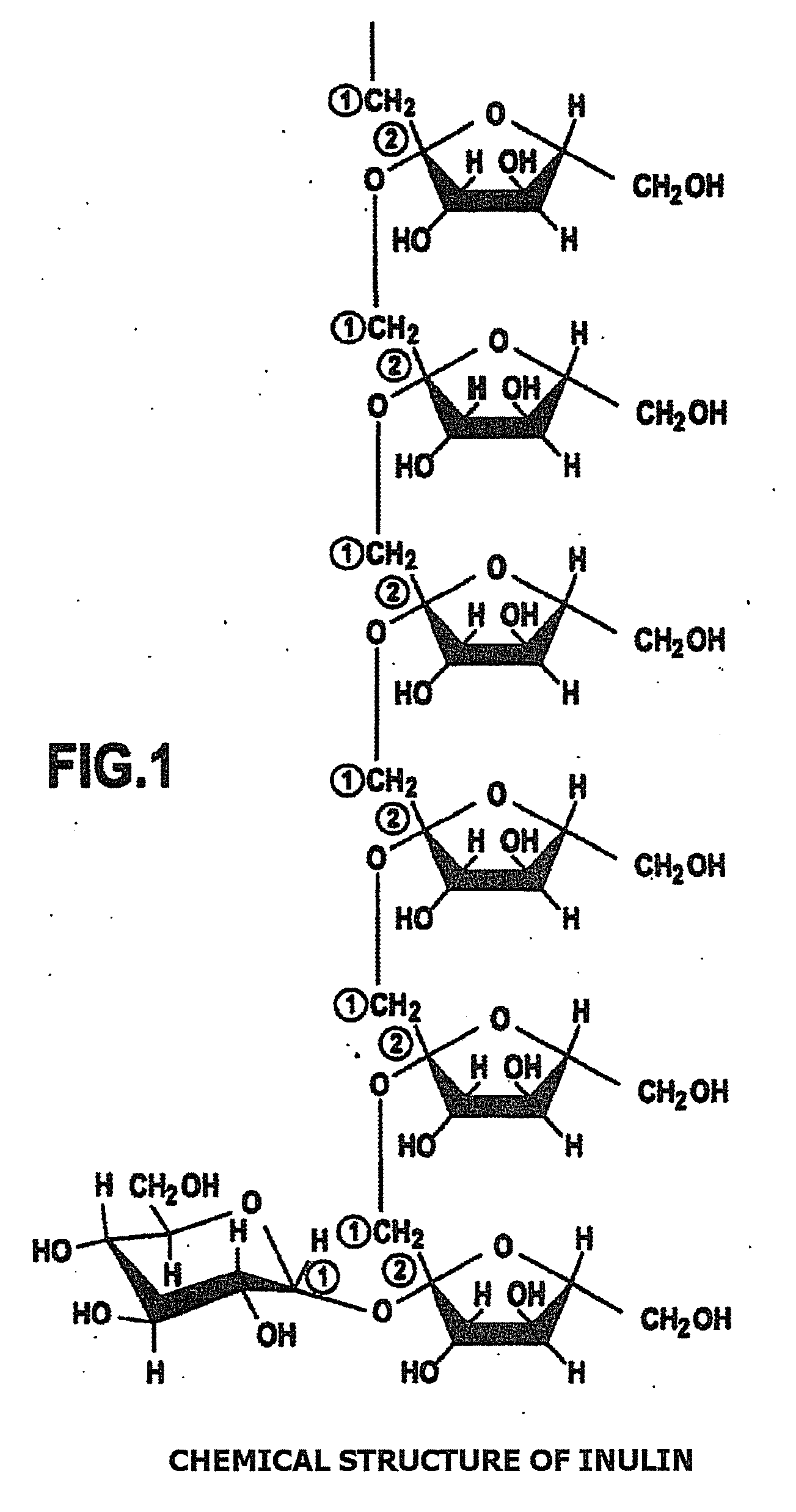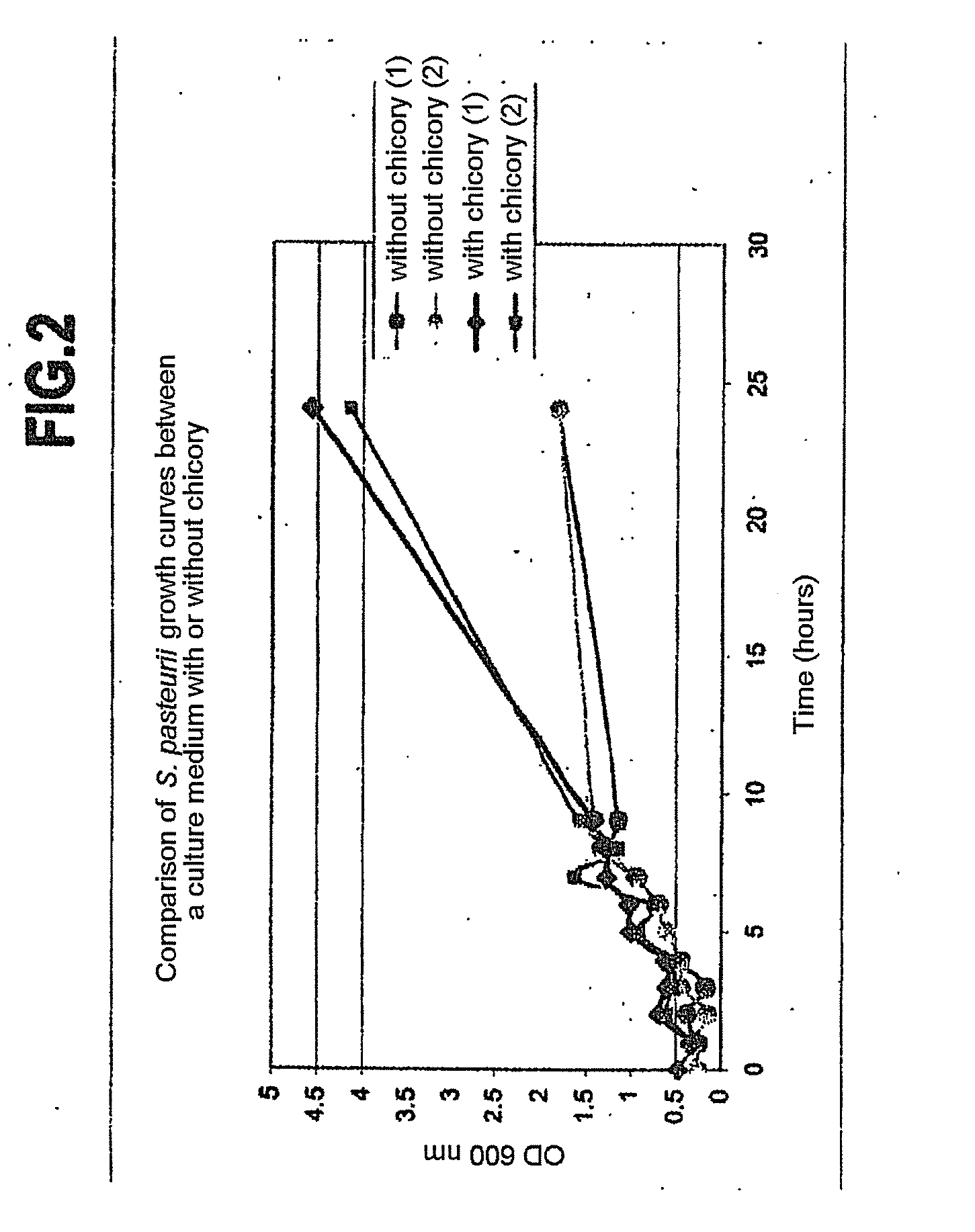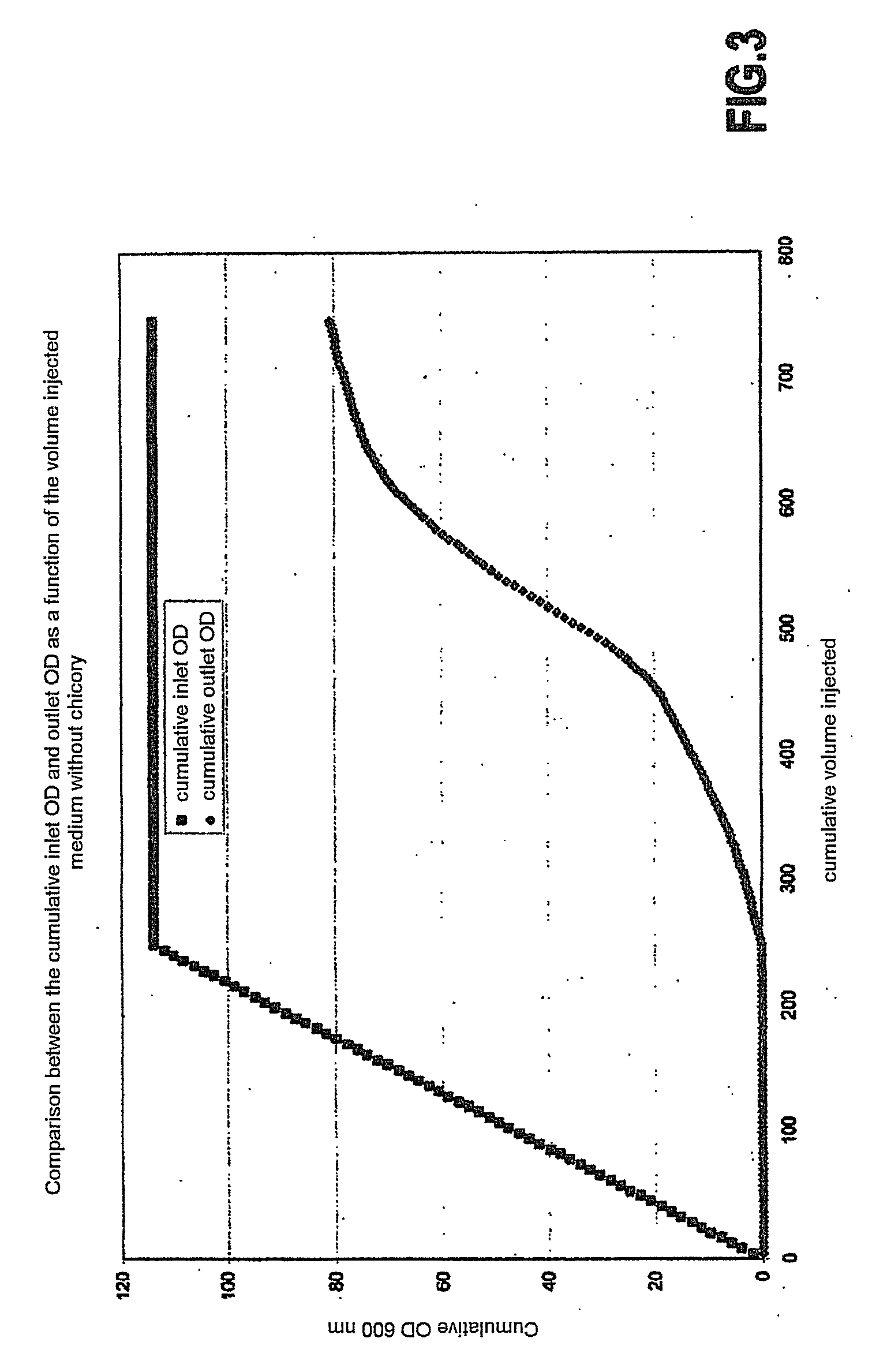Calcification method using calcifying bacteria
a calcification method and bacteria technology, applied in biochemical apparatus and processes, soil preservation, excavations, etc., can solve the problems of viscosification of media and all the less financially viable processes, and achieve the effect of increasing the degree of calcification and reducing the calcification tim
- Summary
- Abstract
- Description
- Claims
- Application Information
AI Technical Summary
Benefits of technology
Problems solved by technology
Method used
Image
Examples
example 1
Screening for Sugars that can be Assimilated by a Calcifying Bacterium
[0080]To bring about the attachment of the bacteria to a substrate, certain biochemical pathways can be stimulated in order to synthesize exopolysaccharides (EPSs). EPSs are sugar polymers, the primary role of which is to facilitate the adhesion of bacteria by reducing the forces of interaction between the microorganism and its immediate environment (for example: solid substrate of Fontainebleau sand type).
[0081]The first step was to carry out a screening of the various sugars that exist, in order to identify that or those which is (are) assimilable and which stimulate EPS synthesis in Sporosarcina pasteurii, preferably without inhibiting urease synthesis.
[0082]For this, two types of API strips were used: API 20 E and API 50CH. These tests are in the form of microtubes containing dehydrated substrates and which are inoculated with a bacterial suspension. The reactions produced during the incubation period are refl...
example 2
Improvement of the Growth of Calcifying Bacteria, and of EPS Synthesis in the Presence of Inulin in the Culture Medium
[0084]In order to determine the amount of inulin necessary in order to act on the synthesis of urease and on the production of EPS in Sporosarcina pasteurii, a part of the nitrogenous carbon source (yeast extract) was replaced with chicory.
[0085]Both in the inoculum (20 g yeast extract+20 g urea, for 1 L of inoculum) and in the culture medium (10 g yeast extract+2.4 g urea+10 μM of NiCl2+3 g of NaCl, for 1 L of culture medium), the substitution of ⅓ to ½ (by mass) of the yeast extract with chicory improved the attachment of the bacteria to the glassware, while at the same time maintaining or increasing the specific enzymatic activity of said bacteria.
[0086]It is noted that the addition of inulin in the proportions mentioned above enabled a more rapid growth of the bacteria (FIG. 2).
[0087]The dosage of inulin recommended in the culture media is therefore between 0 and...
example 3
Improvement of Adhesion of Calcifying Bacteria in the Presence of Inulin in the Culture Medium
[0088]Inulin, in the form of chicory, was introduced into the culture media in order to demonstrate its influence on the adhesion of the bacteria with respect to the substrate to be treated. The chicory used is powdered extract of freeze-dried chicory, derived from the root of Cichorium intibus and sold under the trade name “Chicorée soluble Leroux”. For this, two tests were carried out in parallel on columns:
[0089]The columns were made up of a PVC tube 63 mm in diameter and 200 mm in height, positioned between two PVC bases. One centimeter of filter sand was placed at the two ends and the whole of the column was made up with Fontainebleau sand tamped down under water by tapping. The Fontainebleau sand is the NE34-grade sand from SIFRACO. The injections were carried out from top to bottom.
[0090]The bacteria (Sporosarcina pasteurri—CIP 66.21 Pasteur) were cultured in two different culture me...
PUM
| Property | Measurement | Unit |
|---|---|---|
| Concentration | aaaaa | aaaaa |
| Concentration | aaaaa | aaaaa |
| Adhesion strength | aaaaa | aaaaa |
Abstract
Description
Claims
Application Information
 Login to View More
Login to View More - R&D
- Intellectual Property
- Life Sciences
- Materials
- Tech Scout
- Unparalleled Data Quality
- Higher Quality Content
- 60% Fewer Hallucinations
Browse by: Latest US Patents, China's latest patents, Technical Efficacy Thesaurus, Application Domain, Technology Topic, Popular Technical Reports.
© 2025 PatSnap. All rights reserved.Legal|Privacy policy|Modern Slavery Act Transparency Statement|Sitemap|About US| Contact US: help@patsnap.com



